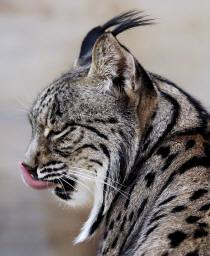The lynx has returned to Italy after being wiped out 100 years ago, the forestry service said Friday.
The re-appearance of one of the wild cats in the northern Italian mountains, which has wandered in from neighbouring Switzerland, was an event ''of exceptional interest and value,'' it said.
The service noted the lynx had lived in the Alps from earliest recorded history until it was exterminated by hunters and sheep farmers in the early 20th century.
The presence of the lynx in the Val di Non mountains has been detected thanks to a signalling collar slipped onto the animal in Switzerland last month.
Lynxes became extinct in that country at about the same time as they did in Italy but were successfully re-introduced in the 1970s.
The feline was sporadically spotted there until the mid-1990s but after that it disappeared again.
A predator at the top of the mountain food chain, the lynx poses no danger to humans.
The Eurasian lynx (Lynx lynx) is a medium-sized cat native to European and Siberian forests, where it is one of the predators.
The Eurasian lynx is the biggest of the four species of lynx. All have short tails, characteristic tufts of black hair on the tip of the ears and a ruff under the neck which has black bars, resembling a bow tie.
The Eurasian lynx has grey to reddish fur with black spots. It is mainly nocturnal and lives solitarily as an adult.
Lynxes prey on hares, rabbits, rodents, foxes, roe deer and reindeer. As with other cats, going for larger prey presents a risk to the animal.
There are three other species of lynx: the Iberian (Spanish) lynx, the Canadian lynx and the bobcat.









